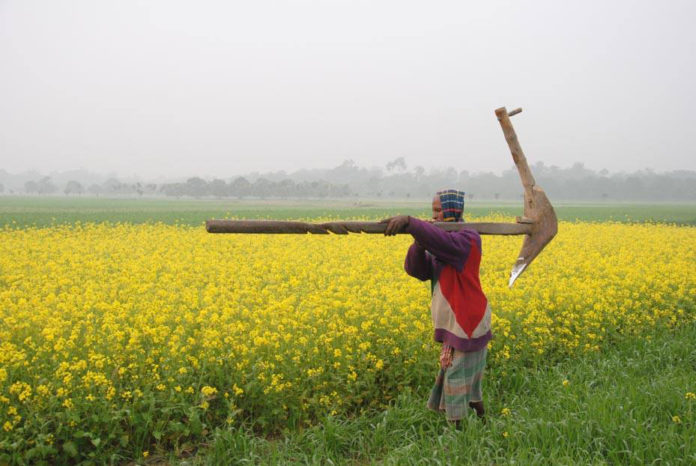RAJSHAHI, April 17, 2021 (BSS) – Around 2.75 lakh tonnes of mustard seeds have been produced during the recent past harvesting season in Rajshahi division creating scopes of meeting up the gradually mounting demands of edible oil.
Additional Director of the Department of Agriculture Extension (DAE) Sirajul Islam said mustard cultivation season has been a complete success on 1.97 lakh hectares of land in all eight districts of the division.
Suitable climatic conditions, high yielding varieties, modern technologies and government’s incentive were reasons for expected yield this season.
Agriculturist Islam said most of the lands were covered with a number of high yielding varieties including BARI Sharisha-9, BARI Sharisha-11, BARI Sharisha-13, BARI Sharisha-16 and BARI Sharisha-17.
He said 60,000 farmers were given seeds and fertilizers free of cost for cultivating mustard in the division under the government’s ‘Agriculture Incentive Programme’.
In addition to the DAE, various other research and development organisations like Bangladesh Agriculture Research Institute (BARI) and many NGOs had taken adequate steps in collaboration with other line departments to boost the mustard yield.
With this breakthrough, the landless and marginal farmers had brought vast tracts of the sandy char lands under mustard cultivation in the Ganges basins and the crops were grown excellent everywhere in the region.
Abdul Mazid, 35, of Nandigram village under Durgapur upazila, had cultivated mustard seed on three bighas of land this year and got yield of six mounds per bigha.
He said the easy cultivation process and lower production cost compared to other Rabi crops is also a reason behind the popularity of mustard cultivation among the farmers in the region including its vast Barind tract.
Rashidul Hassan, 45, another farmer of Kakonhat village, has become successful through cultivating the cash crop for the last couple of years. This year, he cultivated the crop on four bighas of land.
The cultivation of mustard requires only one or two times irrigation while about Taka 1,900 to Taka 2,000 is needed to cultivate the crop on one bigha depending on soil condition.
On an average six maunds of mustard is produced on a bigha of land, Hassan said.
“I had cultivated mustard on four bighas of land and harvested six to seven maunds of seed per bigha on an average,” said Sabbir Ahmed, a grower of Bijoynagar area under Godagari upazila.
He used the “Barisharisha 14” variety which is higher yielding than that of the conventional ones including “Tory 7”.
Another farmer Bachhu Mian, 45, of Amnura area in Chapainawabganj Sadar upazila, had cultivated three bighas of land under the cash crop cultivation.
He got six maunds of yield after using the “Barisharisha-17” variety which is another newly released high yielding variety.
Not only Sabbir and Bachhu but many other farmers, who have become satisfied with the harvested crop that is acreage, are gradually increasing in the region.
BARI has released 16 high yielding mustard seed varieties. Farmers in the barind tract are seen cultivating two of those-BARI Sharisha-14 and BARI Sharisha-17 varieties for the last couple of years.
But BARI Sharisha 14 has become popular for its bold grain, high yielding, yellow colour, oil extraction percentage high and less-water consuming characteristics.
DASCOH Foundation, an NGO, under its Integrated Water Resource Management (IWRM) Project has been working for promoting various less-water consuming crops like mustard, said Jahangir Alam Khan, coordinator of the project.
He said mustard seed is a water-saving crop and its expansion in the Barind area is very important towards lessening the gradually mounting pressure on its underground water.



